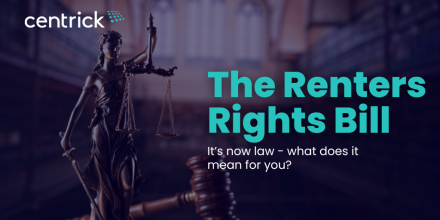PRS properties are the backbone of the UK rental market, with 19% of all households across the country being classified as PRS homes compared to 17% social housing and 64% owner occupiers. As house prices continue to soar and first-time buyer incentives dwindle, renting has become an increasingly attractive option for many. PRS offers flexibility and accessibility for tenants who may not be ready or able to buy, while providing landlords with a steady income stream in a growing market. Keep reading to find out more about what sets PRS properties apart, why they’re popular, and how you can successfully invest in the PRS sector.
What Is PRS?
PRS stands for the Private Rented Sector and refers to residential properties that are privately owned and rented out by landlords to tenants, as opposed to government or non-profit-provided social housing. In PRS, tenants pay rent to private landlords, which can range from individuals with a buy-to-let property to large-scale institutional investors like those found with the growing BTR space. The sector has evolved to include significant institutional involvement, where financial institutions fund large portfolios of rental properties, designed to provide consistent returns whilst also growing the capital assets.
Why Are PRS Properties Popular?
The Private Rented Sector (PRS) continues to grow in popularity, driven largely by the rising costs of homeownership. Many prospective first time buyers are finding that they are being priced out of the housing market due to the gap between property prices and relative incomes, coupled with new buyer incentives. In fact the average UK home now costs £289,000 according to August’s Land Registry report, an increase of 3.4% over twelve months. With limited affordable options for those seeking to purchase and demand at an all time high, renting has become a more practical and affordable alternative.
Rental demand is now double that of pre-pandemic levels, which is good news for PRS investors and landlords that get it right, with both rental prices and house prices continually rising, providing opportunities for capital growth and returns. With more people turning to rental options and fewer properties being built for first-time buyers, the PRS sector remains a crucial part of the UK housing market, benefiting both tenants and investors alike – but it’s not all smooth sailing. Increasing legislation, decreasing of landlord incentives and a fluctuating lending market all spells an increasing need for detail, good management and clear, effective resident strategies that really deliver for all involved.
Who is Renting PRS Properties?
Understanding who lives in the average PRS property is a great way of demographic targeting for optimal returns. Interestingly, tenant demographics have shifted over the years, reflecting broader changes in housing availability, affordability, and lifestyle choices. Here’s a breakdown of the types of tenants who typically rent PRS units:
- Younger Renters: A significant portion of PRS tenants are younger adults. In the 25 to 34 age group, the number of renters has nearly doubled over the past decade, rising from 24% to 46%. This age group often prefers the flexibility of renting over homeownership, which can be cost-prohibitive for first-time buyers.
- Single Adult Households: Approximately 34% of PRS households are made up of single adults without children. These individuals often appreciate the independence renting provides, with many focused on careers or personal freedom.
- Families with Children: There are 8.2 million families with dependent children in the UK rental market. The flexibility to move or upsize as children grow makes PRS an attractive option for these households.
Smart Strategies for PRS Investors
With rental property prices rising by 5.4% in just 12 months, and rental demand showing no sign of slowing in an increasingly competitive market, the private rented sector presents a prime opportunity for investors. To capitalise on this, investors need to take a strategic approach when it comes to purchasing their next PRS unit. Here are just three key considerations for smart PRS investments:
1. Target the Right Demographic
The demographic for PRS housing has evolved, and now caters to a broader spectrum of tenants. The average first-time buyer is now 37, priced out of the property market by rising prices and fewer first-time buyer incentives after the abandonment of Help To Buy. This demographic consists of small families with children and young couples, the most common type of tenant according to a 2022 study – however, other groups such as downsizers and students also make up a significant portion of the PRS market. With the tenant pool broadening as house purchases become less attainable, it is vital to target the right demographic – studio flats for students, inner-city houses and flats for young professionals, and more suburban houses for families are the accepted norm but it’s vital to get deep into the data and question the assumption for best results.
2. Focus on Location
Location remains one of the most critical factors in property investment, with cities remaining popular for searching tenants. Recently released Smart Investing research highlights this, showcasing that cities such as Birmingham, Manchester and Sheffield remain popular with tenants thanks to their variety of transport links, job opportunities and thriving cultures. What’s more, the likes of JLL suggest that these cities could see rental price growth of up to 22.2% from 2024 to 2028 – a testament to their popularity and growth potential. However, this isn’t to say that more suburban areas make poor investments – quite the opposite. Suburban areas are generally favoured by families with children and offer more greater space so, if you hope to target this demographic, focusing on finding high-yielding suburban units could be a smart strategy.
3. Build a Sense of Community
Although the concept of community is the focus of many BTR developments, PRS homes need a sense of community too. Tenants who feel connected to their neighbours are significantly more likely to renew their leases, with studies showing that tenants who know one person in their residential development or neighbourhood are 75% more likely to renew their tenancy. This, in turn, reduces rent voids and boosts net operating income. Investors ought to look for units in neighbourhoods with a great reputation and, if buying an apartment within a block, carefully examine if there are community initiatives designed to bring tenants and owner-occupiers together.
Make The Most Of Your PRS Investment With Centrick
With over £4bn in assets under management and 26,500 homes in our care, Centrick offers more than just property management—we deliver comprehensive solutions that manage risk, compliance, performance, and customer experience. Our open-book reporting and robust governance provide transparency and trust, ensuring that your portfolio is always in capable hands. Since 2005, Centrick’s Asset Management team has set itself apart through operational expertise and a national reach. Whether managing distressed assets, new builds, single-family homes, or build-to-rent developments, we bring nearly two decades of experience in maximising the value of residential portfolios. Our goal is simple: to maximise your returns while minimising the hassle. If you’re looking for a partner who understands how to get the most from your portfolio, get in touch with Centrick today.









